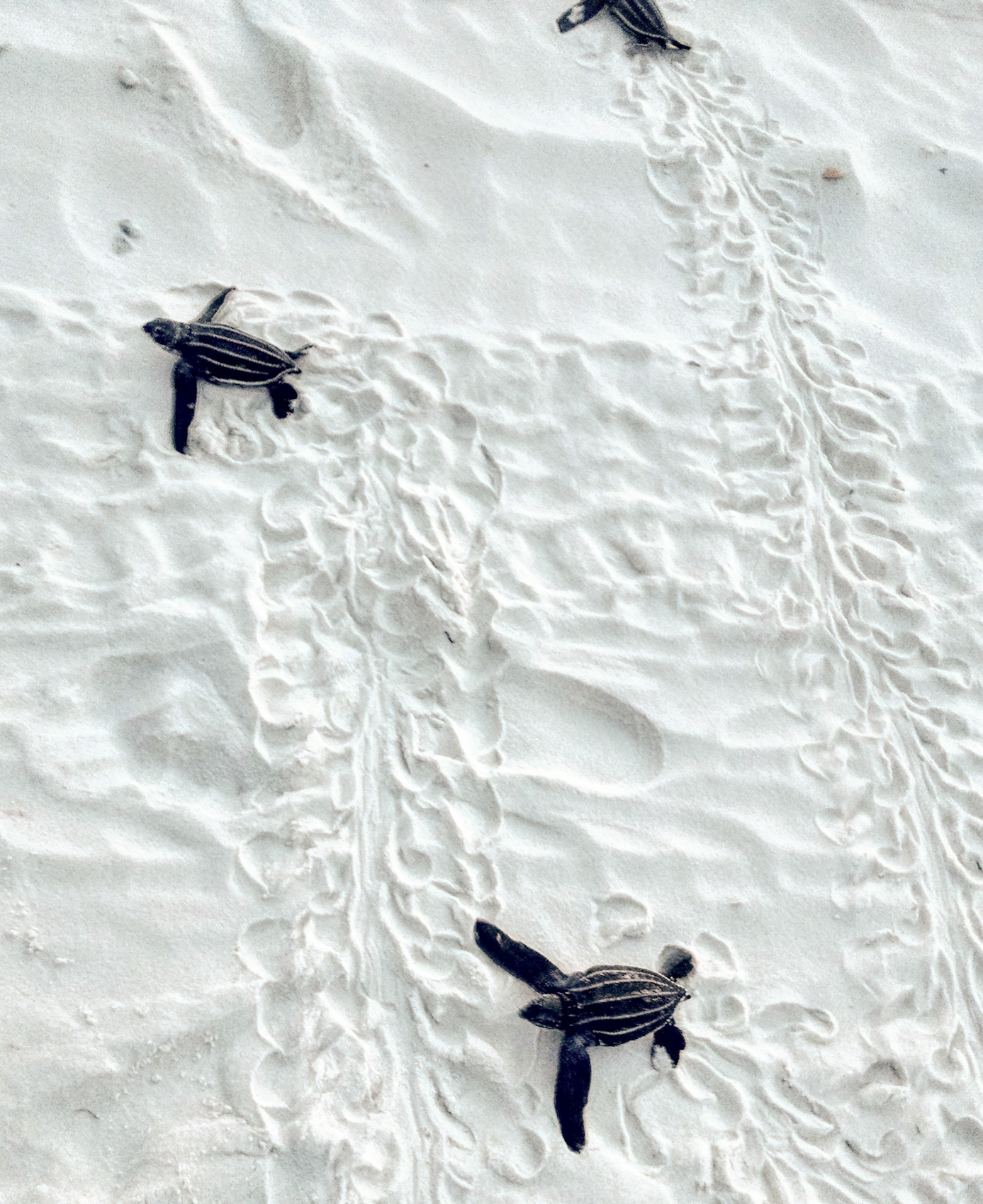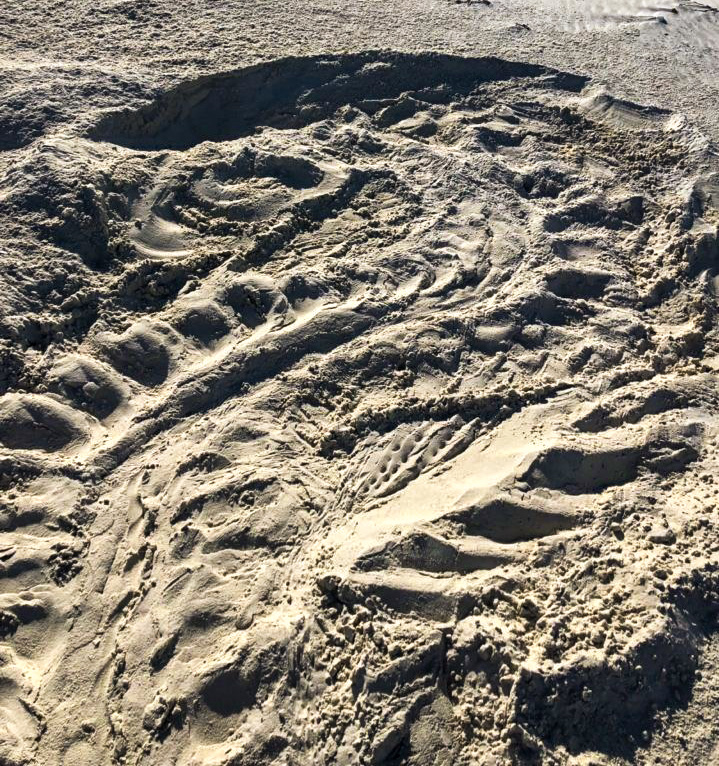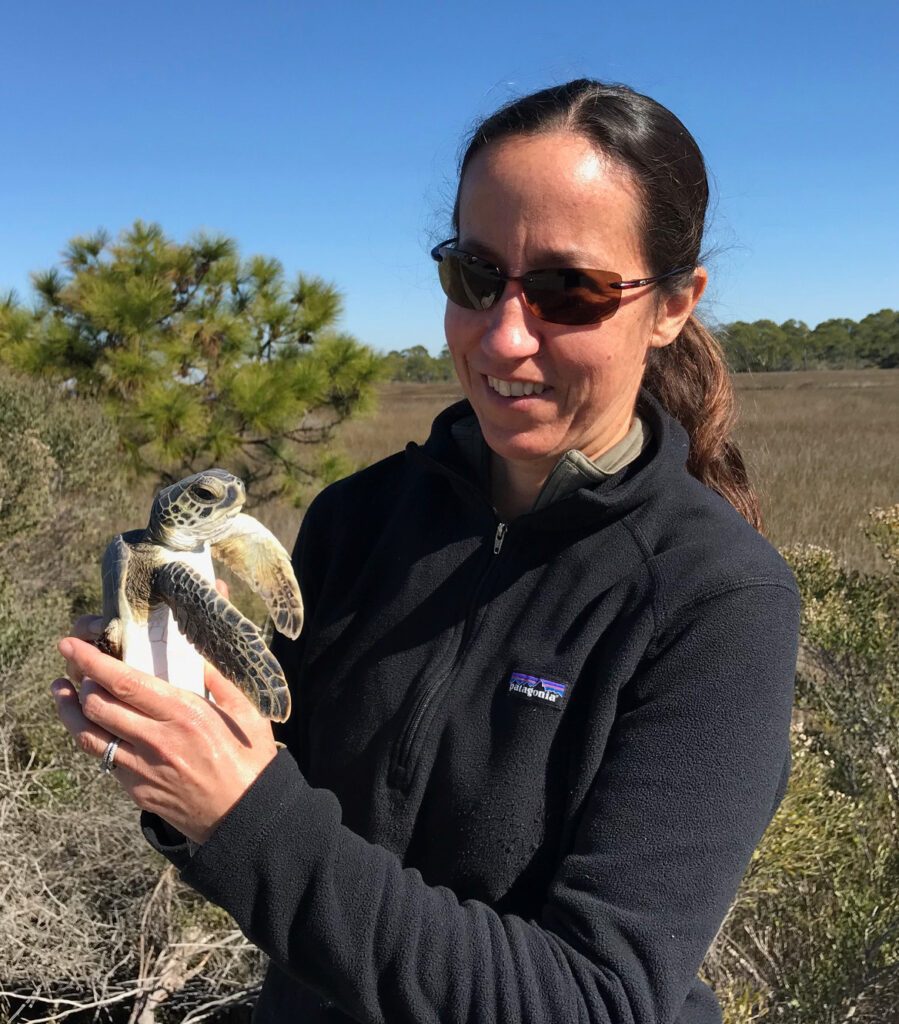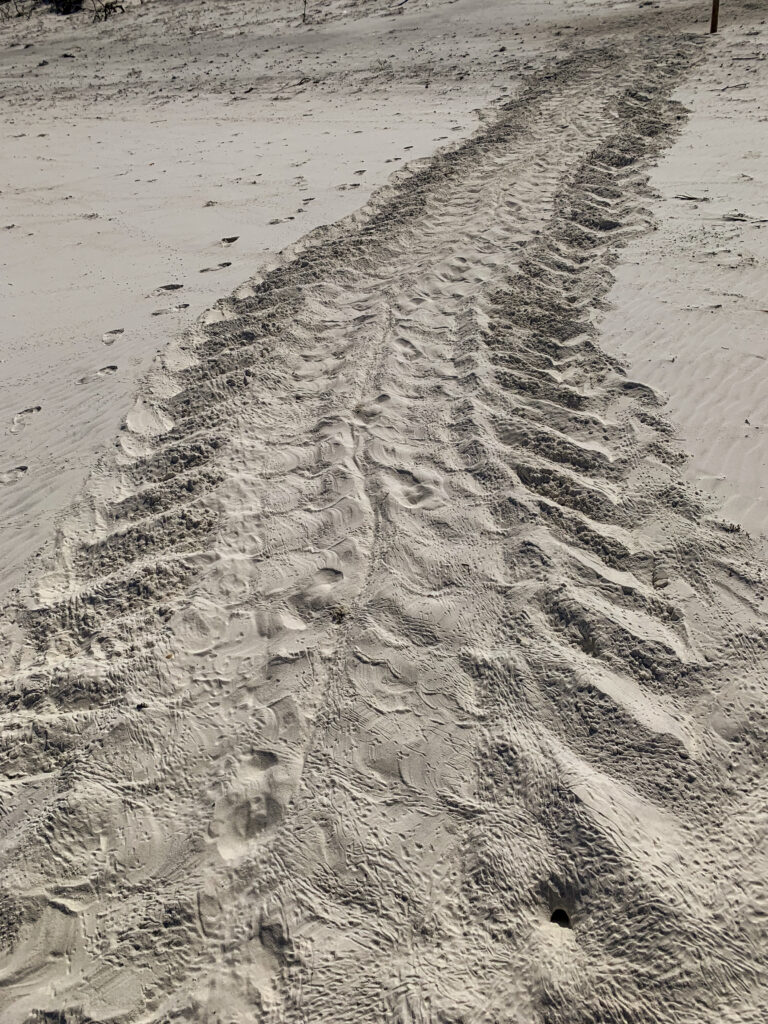Are leatherbacks flocking to our beaches?
Two recent instances of rare leatherback turtles visiting beaches at Indian Pass and St. George Island, especially so early in the nesting season, have people wondering, are we about to see a bumper crop of little hatchlings of this variety of sea turtles nest on our beaches?
According to Margaret Lamont, a research biologist with the U.S. Geological Services’ Wetland and Aquatic Research Center, who has worked studying sea turtles for the past 30 years, beginning on Cape San Blas, it just might be the case.
“It’s definitely rare and it does appear to be increasing,” she said. “What’s partially exciting is the leatherbacks are the largest sea turtle, the size of a Volkswagen bug. They’re just enormous.
“In Port St. Joe, you’re not going to see a leatherback, that’s part of the excitement of it,” Lamont said.
She works with four employees who live in Port St. Joe – Joseph Alday, Carson Arends, Dan Catizone and Samantha Snow, who oversee the field aspects of Lamont’s work, catching and tagging turtles so their travels can be monitored.
The reason that leatherbacks are so named, is that unlike their cousins loggerheads, greens and Kemp’s ridleys, these turtles do not have a hardshell, a formation akin to a bony skeleton that serves as protection.
Rather, leatherbacks have a flexible skin, a soft carapace, that serves them well as they forage at great depths for their favorite food, jellyfish.
“They dive really deep, and when you go down deep, there’s a ton of pressure,” Lamont said. “Their bodies need to be flexible so they don’t get crushed.”
Plus leatherbacks don’t have the typical beak you expect to see with turtles. “They have these projections in their mouths and throat, almost like a cacti,” she said.
The type of turtle nests that the volunteer patrols encounter at Indian Pass and on St. George Island are predominantly loggerheads, which favor the entire northern Gulf Coast, followed closely by green turtles.
But after that it’s a big drop off, with leatherback and Kemp’s ridley turtles pretty rare on these shores.
Leatherbacks are considered tropical nesters, preferring Central and northern South America.
“As the climate warms, they’re able to nest further north, so there’s a bit of range expansion,” Lamont said, noting that in addition to the effect of global warming, instances of greater protections of the endangered species, such as the ban on harvesting their eggs on nesting beaches in poorer countries, may be boosting their numbers.
She noted that because they dive so deep, it is unlikely that turtle excluder devices employed by shrimpers have had a significant effect on their populations.
“Less is known about the leatherbacks, as they’re more difficult to observe,” Lamont said.
Researchers have the ability to tag them by attaching a flipper tag, similar to a metal tag placed on a pig ear, or sometimes even an internal tag, a special piece of equipment that lasts longer but requires a reader.
A satellite tag can be put on externally, glued with epoxy to the back of the turtle, but since those with shells slough their scutes, researchers will only get a year or so of satellite signals whenever the turtle surfaces.
Acoustic tags require a turtle to swim past an underwater listening station, where they can be read by a small device attached to an anchor or pier whenever something carrying one swims by.
Because it was spotted prior to the May 1 start of nesting season, some of the eggs in the Indian Pass leatherback nests had been eaten by coyotes.
But the turtle patrol, allerted by a resident who spotted the enormous crawl tracks, was able to install a screen to protect the eggs for the remaining portion of the 60-day incubation period.
“We never get nests in April, we do not start getting nesting until the third week of May,” said Lamont.
On St. George Island, the enormous tracks were clearly those of a leatherback, but were considered a false crawl, since the mother turtle decided for whatever reason she wasn’t going to lay her hatchlings-to-be on that spot in the sand.
“She will nest later that night or the next night,” Lamont said. “Or she could drop her eggs in the ocean,” where they cannot survive.
While the loggerhead false crawl seems to suggest there are more to come, it’s hard to predict. Much of that picture is obtained by understanding the extent of follicles formed by the leatherbacks based on the nourishment from the foraging areas.
“The nesting season could be bigger and if I have to guess I’d say we’ll have a good year,” Lamont said. “But turtles do what they want, and with leatherbacks we don’t know much about where they forage.
“Every single nesting season is different,” she said. “They come early, they come later, you never know what you’re going to see out there.”
One thing for sure, the productivity of the nesting season is improved by beachfront visitors not digging holes that trap the turtles, or leading obstructions that hamper their journey to and from the water.
Plus racoons, ghost crabs and birds will pick off the hatchlings, and tarpon eat them in the water.
“They’re easy pickings for anything,” Lamont said. “Between artificial lighting, and bonfires, it’s amazing any survive.”





Meet the Editor
David Adlerstein, The Apalachicola Times’ digital editor, started with the news outlet in January 2002 as a reporter.
Prior to then, David Adlerstein began as a newspaperman with a small Boston weekly, after graduating magna cum laude from Brandeis University in Waltham, Massachusetts. He later edited the weekly Bellville Times, and as business reporter for the daily Marion Star, both not far from his hometown of Columbus, Ohio.
In 1995, he moved to South Florida, and worked as a business reporter and editor of Medical Business newspaper. In Jan. 2002, he began with the Apalachicola Times, first as reporter and later as editor, and in Oct. 2020, also began editing the Port St. Joe Star.